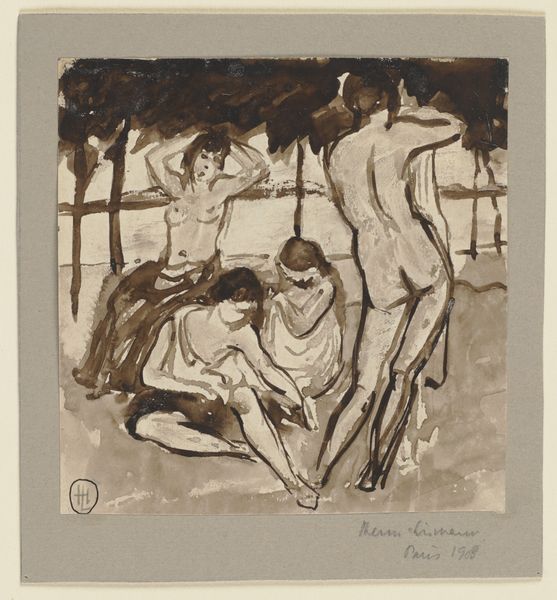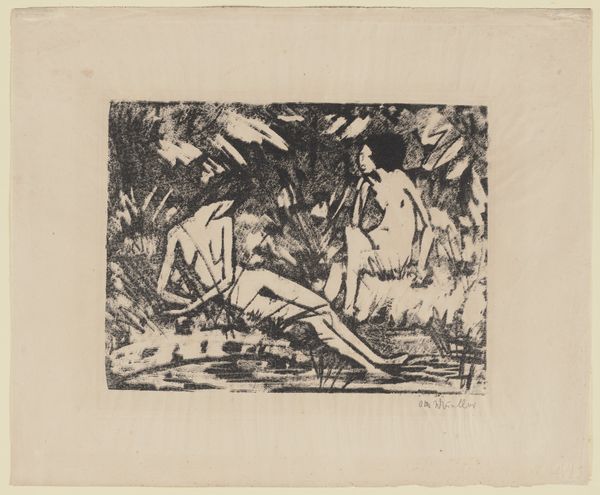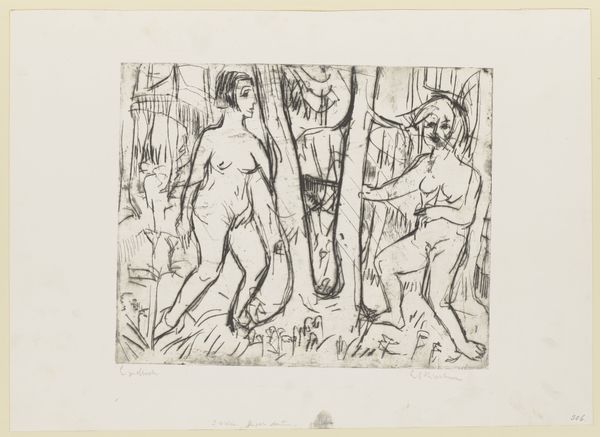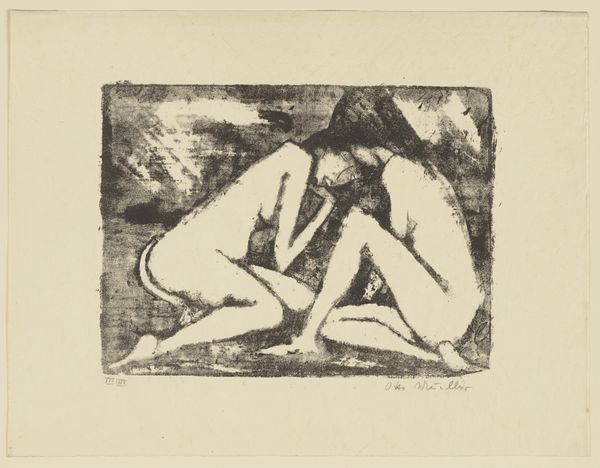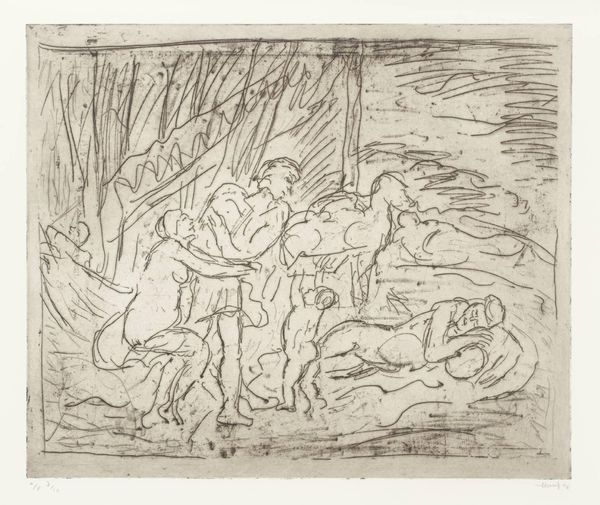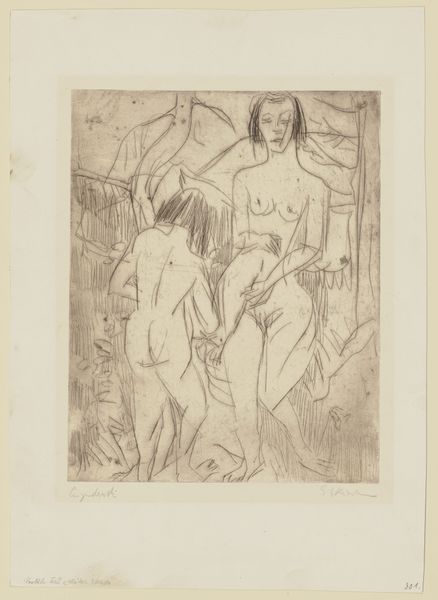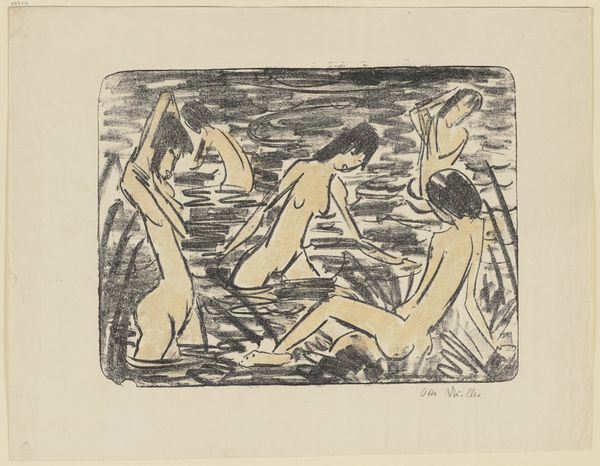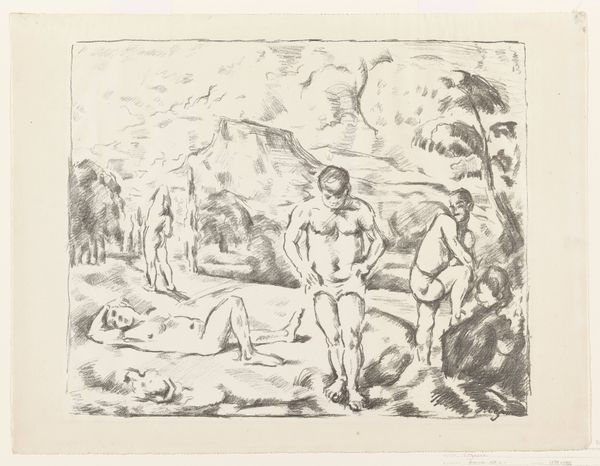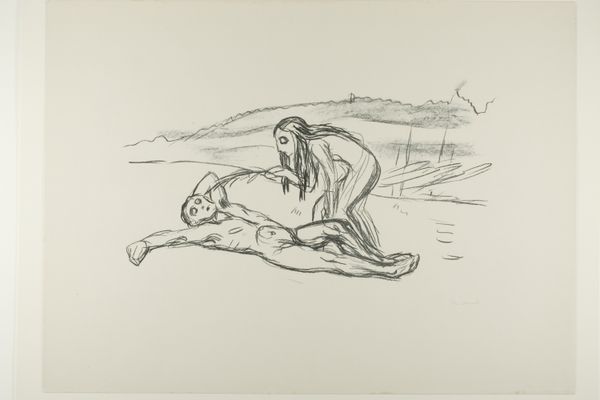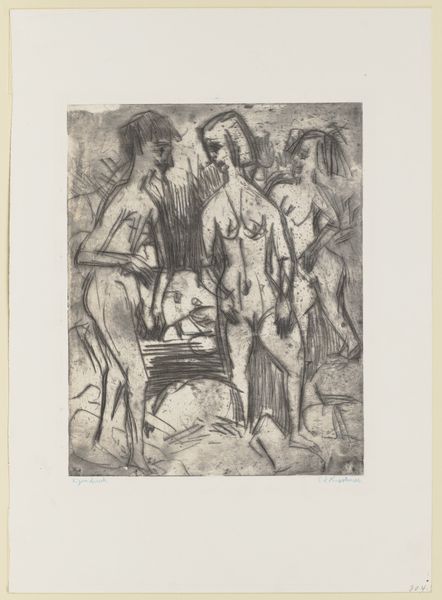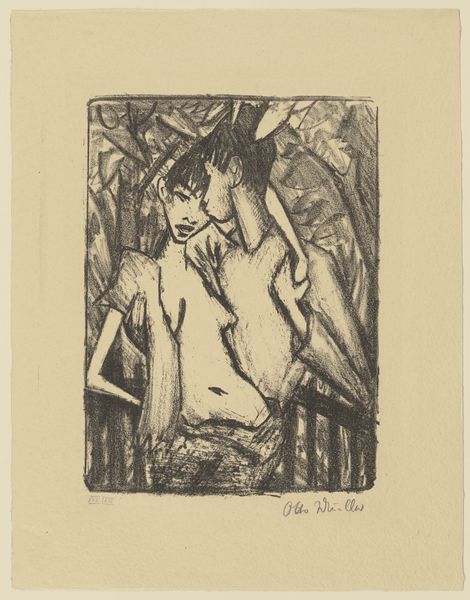
Schäferszene_ Paar mit nacktem Oberkörper unter Bäumen sitzend, neben ihnen ein Hund 1910
0:00
0:00
drawing, paper, ink
#
drawing
#
landscape
#
charcoal drawing
#
figuration
#
paper
#
ink
#
expressionism
#
erotic-art
Copyright: Public Domain
Editor: Here we have Hermann Lismann's "Schäferszene," a charcoal and ink drawing from 1910. It depicts a couple, semi-nude, sitting beneath trees with a dog nearby. There's a kind of melancholic intimacy conveyed through the tonal washes and the subjects' closed forms. What stands out to you in terms of the composition and application of the medium? Curator: Indeed. I note the artist's reliance on value to sculpt form rather than line. See how the chiaroscuro effect throws the figures forward, accentuating their volume. What's further striking is Lismann's exploitation of the tonal scale offered by charcoal and ink. Notice the way in which he varies his pressure, moving deftly between thin, watery washes and concentrated deposits of pigment to develop textural complexity. Editor: The lack of distinct lines really does lend it a unique feel. Does the monochrome palette suggest anything specific to you, symbolically or emotionally? Curator: Symbolism here emerges, interestingly, from the constraint itself. The absence of color encourages our eye to actively participate in its creation. Observe how the muted palette highlights the tactile qualities of the figures, lending the composition a raw, primordial character. We can consider how that directly informs the expression of the human form and emphasizes the emotional tension in the scene. Editor: That makes me consider the textures in new light; it adds a tactile element I hadn’t initially considered! Thank you, that was really enlightening. Curator: And to you as well; may it serve as the key for decoding other monochromatic explorations.
Comments
No comments
Be the first to comment and join the conversation on the ultimate creative platform.
